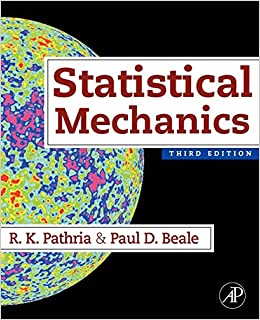Consider a system with a modified expression for the Landau free energy, namely [ psi_{h}(t, m)=-h m+q(t)+r(t)
Question:
Consider a system with a modified expression for the Landau free energy, namely
\[
\psi_{h}(t, m)=-h m+q(t)+r(t) m^{2}+s(t) m^{4}+u(t) m^{6},
\]
with \(u(t)\) a fixed positive constant. Minimize \(\psi\) with respect to the variable \(m\) and examine the spontaneous magnetization \(m_{0}\) as a function of the parameters \(r\) and \(s\). In particular, show the following: \({ }^{21}\)
(a) For \(r>0\) and \(s>-(3 u r)^{1 / 2}, m_{0}=0\) is the only real solution.
(b) For \(r>0\) and \(-(4 u r)^{1 / 2}
(c) For \(r>0\) and \(s=-(4 u r)^{1 / 2}, m_{0}=0\) or \(\pm(r / u)^{1 / 4}\). Now, the minimum of \(\psi\) at \(m_{0}=0\) is of the same height as the ones at \(m_{0}= \pm(r / u)^{1 / 4}\), so a nonzero spontaneous magnetization is as likely to occur as the zero one.
(d) For \(r>0\) and \(s<-(4 u r)^{1 / 2}, m_{0}= \pm m_{1}\) - which implies a first-order phase transition (because the two possible states available here differ by a finite amount in \(m\) ). The line \(s=-(4 u r)^{1 / 2}\), with \(r\) positive, is generally referred to as a "line of first-order phase transitions."
(e) For \(r=0\) and \(s<0, m_{0}= \pm(2|s| / 3 u)^{1 / 2}\).
(f) For \(r<0, m_{0}= \pm m_{1}\) for all \(s\). As \(r \rightarrow 0, m_{1} \rightarrow 0\) if \(s\) is positive.
(g) For \(r=0\) and \(s>0, m_{0}=0\) is only solution. Combining this result with (f), we conclude that the line \(r=0\), with \(s\) positive, is a "line of second-order phase transitions," for the two states available here differ by a vanishing amount in \(m\).
The lines of first-order phase transitions and second-order phase transitions meet at the point \((r=0, s=0)\), which is commonly referred to as a tricritical point (Griffiths, 1970).
Step by Step Answer:






